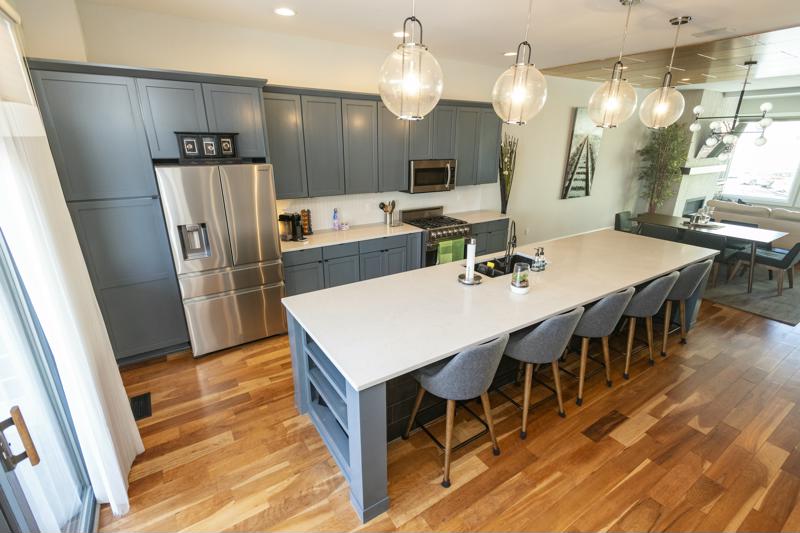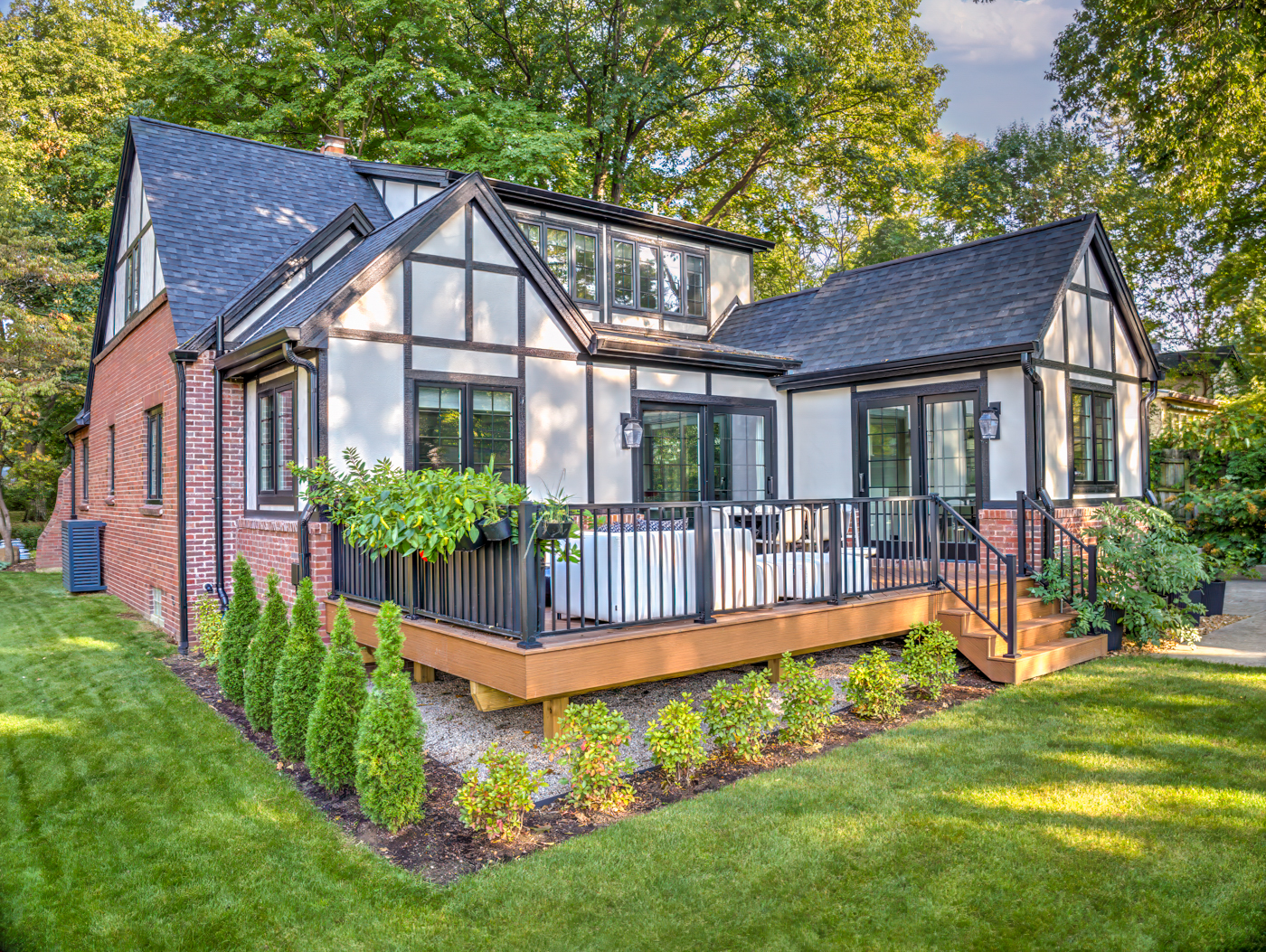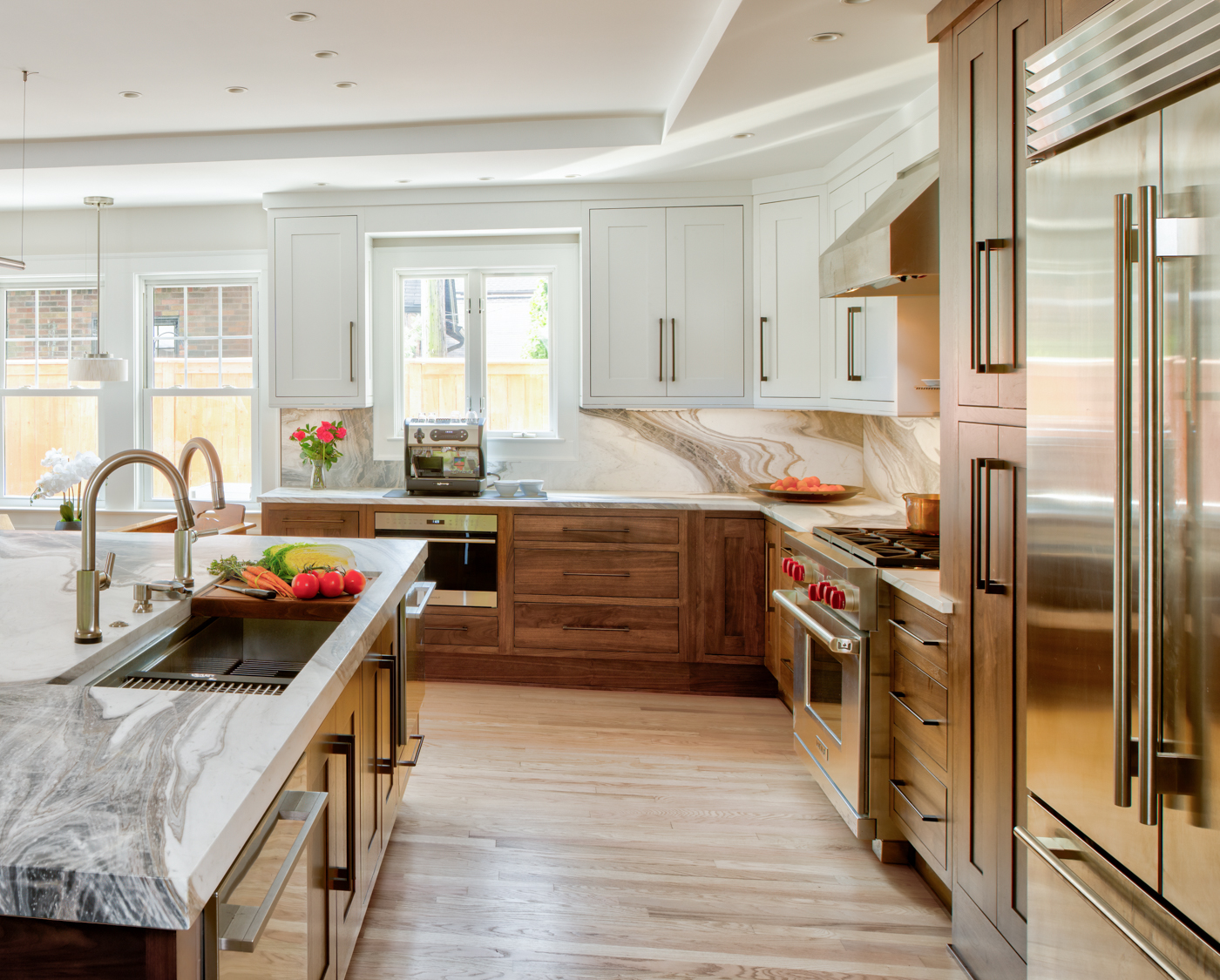One of the biggest decisions a homeowner must make when remodeling a kitchen is whether to completely replace existing kitchen cabinets or to salvage them by refinishing or refacing the cabinetry.
Each option comes with its own pros and cons, mainly related to cost, the type of cabinet material, and how long it will take to get the best cabinet refinishing results. Quality kitchen cabinets can last 50 years, but if yours are starting to show damage, don’t function properly or just look outdated, now may be the time to replace them with something more timeless, sturdy and durable.
Here’s what you need to know when deciding whether to refinish, reface or replace kitchen cabinets:
Refinishing Kitchen Cabinets
Kitchen cabinet refinishing requires good bones or a good foundation to build upon, since you’re keeping most of the cabinetry components and simply applying new paint or stain.
If there’s evidence of any water damage, the cabinets don’t function properly, or the cabinet box is too worn, don’t waste your time and money on refinishing. The wood won’t hold up to the sanding or chemical stripping needed to remove the existing finish.
The type of wood matters, also. Cabinets made from laminate or thermofoil cannot be refinished (can’t be sanded or stripped), and cabinets made from wood with a rougher grain may prove difficult in the refinishing process.
This client’s kitchen cabinet refinishing project started with a light maple wood, featuring a smoother grain that’s ideal for refinishing. The client was happy with the function and layout of the cabinets, and she didn’t want to add any special pullout drawers or other features. We removed and sanded down each individual cabinet door, drawer and box, before filling holes from previous hardware, priming and sanding them down again. We added the finishing touch by applying two coats of medium dark gray paint for a new and modern look.
Refacing Kitchen Cabinets
While applying new paint or stain to existing kitchen cabinets is one way to refinish them, it’s also possible to reface cabinets by installing completely new cabinet doors and drawer fronts, or just by installing new wood or laminate veneer over the fronts.
Homeowners who go the cabinet refacing route typically like the layout and functionality of their kitchens, and they see no need to replace their cabinets. They usually want a more modern, fresher look to hide years of wear and tear.
When refacing, think about adding accessibility and functionality to well-constructed cabinets, including options like pull-out drawers, rotating shelves or open shelving. Freshen up the interior, too, by sanding or painting to match your kitchen’s new look.
Replacing Kitchen Cabinets
Replacing kitchen cabinets costs more than refinishing cabinets or refacing them, but the beautiful and functional result is usually worth the investment in the long run.
Do your cabinet doors stick? Are you tired of dragging out the step stool every time you need to reach something on top of the shelf? Want to enjoy cooking in your kitchen again, with everything accessible and within reach?
Hire a remodeling professional to evaluate your existing kitchen cabinets before deciding whether to refinish, reface or replace. We’ll make you feel confident in your kitchen remodeling decision.









